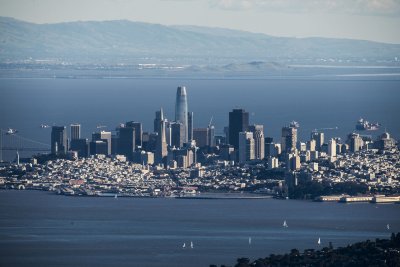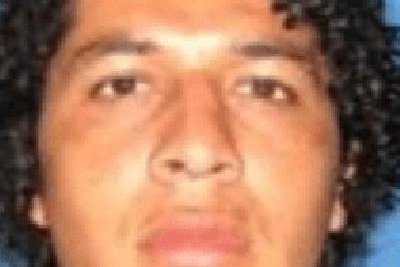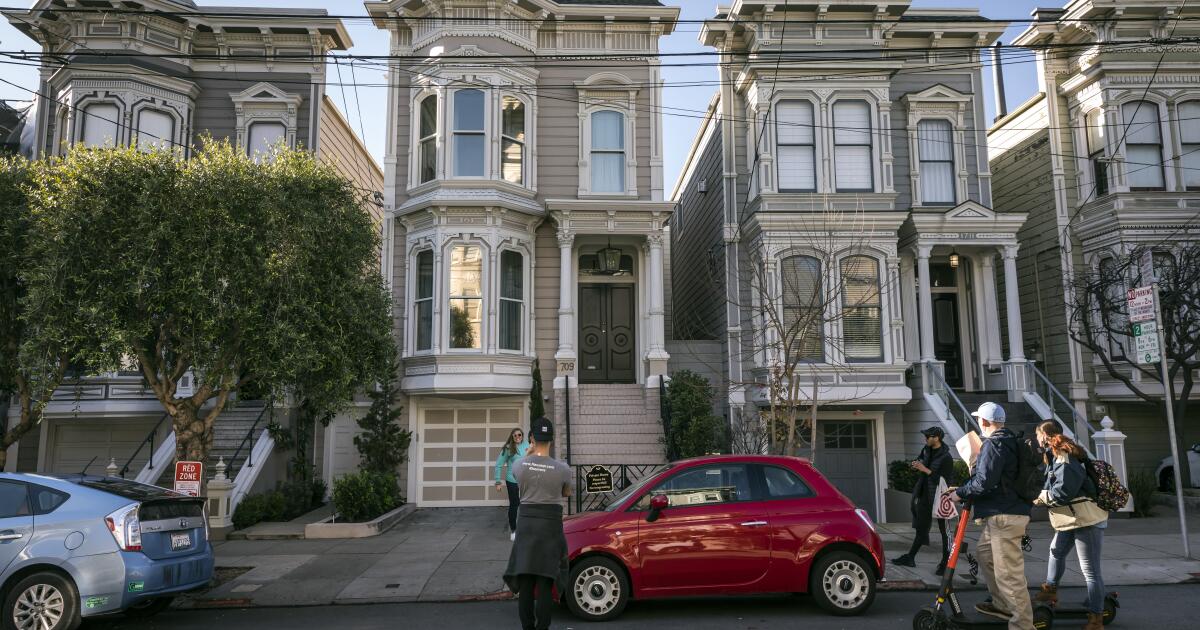A visit to San Francisco comes with culture, history and adventure, Craig Jones found out as he explored a city that brought the world a very famous bridge and the Grateful Dead
“The symbolism of San Francisco, since its very origins, is that this is the edge of the world. It has always represented some kind of frontier.”
It doesn’t take being by the bay all that long for the resonance of those words, from The Beat Museum’s art director Brandon Loberg, to truly hit home. The Golden City is a cultural colossus. But be under no illusion, San Fran is famous for a lot more than a bridge, Alcatraz and Mrs Doubtfire. As I found out during a tour of the hidden gems of the city.
The aforementioned museum is dedicated to the Beat Generation, an influential 1950s movement comprising notable writers such as Jack Kerouac and Allen Ginsberg, whose quest for tolerance and compassion remains relevant in 2025.
You’ll find the museum across from the legendary City Lights bookshop in the North Beach district. Don’t let the name deceive you, as San Francisco really isn’t that kind of coastal Californian city.
READ MORE: Best days to book cheap Christmas holidays as experts say there’s still timeREAD MORE: Foreign Office issues urgent Thailand and Cambodia warning as fighting breaks out
Instead, North Beach is a rich, flavoursome tapestry of Italian-American identity. Since 1956, creatives have sought inspiration over coffee and pastries at Caffe Trieste, while Tony’s Pizza Napoletana celebrates Naples’ finest export with considerable acclaim. Tony Gemignani’s pizzas regularly take pride of place in round-ups of the world’s best.
After such indulgence, a stroll around the neighbouring Washington Square Park wouldn’t be the worst idea. Overlooking it is Saints Peter and Paul Church, where screen siren Marilyn Monroe married baseball legend Joe DiMaggio in 1954. For those after a small piece of iconic showbiz sparkle.
While there’s certainly a vast history to discover, San Fran is undeniably at the forefront of the here and now. Evidenced most visually in the Waymo taxis operating in the city. If you are brave enough, you can take a trip to the future in one of the 200 driverless cars. Fresh from nearby Silicon Valley, simply fire up an app, and you’ll soon be zig-zagging down Lombard Street without having to make small talk – you can also hook up any embarrassing music as loud as you like without guilt.
Whatever mode of transport you prefer, a stop at the tie-dye haven of Haight-Ashbury is an absolute must. It is synonymous with The Summer of Love, a real moment in American counterculture which saw an estimated 100,000 people come together, back in 1967, for a spiritual awakening that left a lasting imprint on society.
Pam Brennan is someone who lived the experience. When we met, she provided a vivid picture of the time and its legacy through her Haight-Ashbury Flower Power walking tour. “We used to call ourselves freaks as they made hippies seem desperate – then we claimed the word hippy back,” she told me.
Music greats Janis Joplin, Joni Mitchell and Jimi Hendrix were championed in Haight-Ashbury – you’ll find a mural dedicated to the latter overlooking Haight’s fine array of wonderful thrift stores and eateries. The renowned Amoeba Music record shop is an ideal place to grab something from one of the area’s musical, and cultural, trailblazers.
Ask any true Haight-Ashbury local and The Grateful Dead stand above all the area’s other music artists, as great as many of them were. This year has marked the 60th anniversary of the band, formed by Jerry Garcia, Bob Weir, Ron ‘Pigpen’ McKernan, Phil Lesh and Bill Kreutzmann, with a series of events honouring their songs and, most importantly, their influence. Still today, ‘Deadheads’ from all over the world make the pilgrimage, for a selfie outside the distinctive purple house in Ashbury Street where the group resided with manager Rock Scully – back in the 1960s.
The Counterculture Museum, which is based on Haight Street and opened earlier this year, has a special Grateful Dead section alongside exhibits on San Fran’s significance in pioneering the LGBTQIA+ movement, the city’s battle for racial justice, and equality for women.
During a stay at Hotel Zepplin, in Post Street, you’ll identify subtle nods to San Francisco’s role in forefronting important social causes. The hotel, which describes itself as ‘a love letter to rebels and revolutionaries’, has 196 rooms, a gym and an accompanying diner called PLS on Post.
The significance of the Grateful Dead’s anniversary hasn’t been lost on the music-themed accommodation with record players and a selection of vinyl, coming as standard in suites alongside a sweet, cherry Garcia ice cream.
It is often said that if you can’t eat well in San Francisco, then there’s something very wrong. The Californian city is considered a culinary gem. A stone’s throw (in American distances…) from Hotel Zeppelin is Bombay Brasserie, which has a menu full of dishes celebrating flavours from India’s diverse regions.
While Hook Fish presents a relaxed, casual neighbourhood atmosphere. The seafood joint is an ideal perch to refuel after a no-rush stroll at Sunset Dunes Park. You’ll find elegance and a cocktail menu demanding to be conquered at celeb chef Tyler Florence’s Wayfare Tavern. An unrivalled spot where the hours quickly float by, feasting on elevated American classics.
Whether in the sun or under the blanket of ‘Karl’, the city’s infamous fog, a ferry trip passing the Golden Gate Bridge and crossing to Sausalito ends with some of the most magnificent Italian cuisine imaginable.
Food and an authentic deep dive into San Francisco’s heritage can be explored during a walking tour with the aptly named Stretchy Pants group. The Mission district saunter provides a bite of life in the mainly Latin-American area, channelling the important stories its food tells. The message is clear, as guide Robert Magee states: “This area has always been a bastion of resistance to the establishment.”
This is echoed by gazing upon the Mission’s mesmeric murals. Enchanting in their colourful splendour, while pulling no punches. My Stretchy Pants experience concluded in the Castro neighbourhood. A groundbreaking, joyous celebration of the LGBTQIA+ movement. Vibrant and welcoming, it is home to the renowned Castro Theatre alongside a number of clubs and bars.
The Twin Peaks, housed on the corner of Castro and 17th, is a must-visit. It was the first American gay bar to have transparent plate-glass windows – that clear act of defiance was an inspiration to others. Next door there’s Hot Cookie where, let’s just say, many ‘playful’ sweet treats can be devoured. Let your imagination flow on that one…
For certain, there’s a memorable night out waiting in Castro. There’s much vibrancy to San Fran’s nightlife offering. Elsewhere, you can feel the history in the walls of The Great American Music Hall with it dating back to 1907. An Evening with Robin Williams, from San Francisco’s much-missed adopted son, was filmed there in 1982. While this year, the brilliantly bonkers Misfit Cabaret celebrated their 10th anniversary – they are irregular regulars at the O’Farrell Street institution.
Another diverse thread to the city’s cultural cloth comes in the shape of the annual festival Super Flex. The contemporary arts event takes over Chinatown’s streets. Among many 2025 highlights, seeing a hugely talented DJ orchestrate a street rave as he played an Earth, Wind, and Fire mix from a gigantic animatronic fish was something truly unique to behold.
After all that, a rest might be needed. A relaxing one can be found at the Kimpton Alton Hotel in the family-focused Fisherman’s Wharf area. The hotel offers 248 accommodation options, including spacious rooms and suites. It also has record players in their rooms, allowing you to give your Amoeba purchases a spin – additionally, you’ll find a selection of the Kimpton Alton’s picks in your room.
The hotel has a gym and Filipino restaurant Abacá serving breakfast, lunch and dinner. It is where yours truly discovered a fondness for ube. The purple yam, native to the Philippines, added an extremely bold and striking composition to an evening cocktail.
Fully recharged, Pier 39, and the Wharf’s other tourist attractions are on your doorstep – alongside some stunning water views. You can actually experience the latter first-hand by taking a solo expedition, on the waves, courtesy of City Kayak – based beside Oracle Park, the home of the San Francisco Giants baseball team. There are routes for all abilities, beginner to club level, where you’ll almost certainly encounter one of San Fran’s native sea lions.
Once I’d stopped spinning in circles, I followed a number of Giants fans on the waves to Oracle Park, where some supporters watch the games, for free, from the stadium’s big screen, bobbing in their kayaks with a beer. If you love sport, this ritual is such a one-of-a-kind experience. Later, I also got to enjoy the action, from the stands, inside Oracle Park as the Giants hosted their rivals, the LA Dodgers.
As you head on the home run, the adorable Wag Brigade will make one last cute play in persuading you to extend your stay. Consisting of a team of adorable dogs, the pawsome San Francisco Airport initiative, launched in 2013, aims to make plane travel a little less stressful as they patrol SFO’s terminals.
Back home, you’ll be barking enthusiastically, reciting San Francisco’s tales.
Book the holiday
- Rooms at The Hotel Zeppelin start from $179 (approximately £133). You can book at zhotelssf.com.
- Kimpton Alton Hotel rooms start from $685 a night (approximately £512) and can be booked at altonhotelsf.com.
- British Airways flies from London Heathrow to San Francisco from £489 return, including taxes and carrier fees. Book on ba.com.
- You can find further information by visiting www.sftravel.com.






